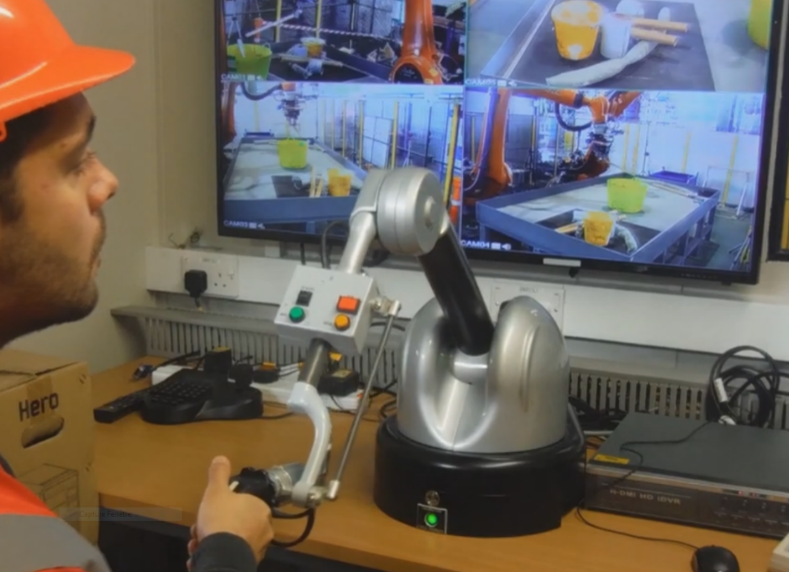TELEROBOTICS
APPLICATIONS
Combine human dexterity with robotic precision for optimal productivity!
“No man entry” Telerobotics Applications
Nuclear, Oil & Gas, Clean room, Dangerous environments …
Hot Cells (Nuclear)
Cutting & Grinding (Nuclear & Industry)
High pressure water stripping, cleaning, cutting, or even welding (Industry)
(Un)screw the bolts (Nuclear & Industry)
Multi-tools remote operating (Industry)
In our pursuit of advancing industrial safety and efficiency, the principle of "No Man Entry" emerges as a pivotal cornerstone in our mission to protect human lives. This principle is particularly pronounced in environments such as nuclear installations, where the risks are significant. In these installations, robots deployed in "hot cells" are teleoperated by operators stationed in safe rooms, ensuring that no human is exposed to hazardous conditions.
Beyond nuclear installations, many industrial processes present challenging environments where traditional operation methods pose serious risks to operators. Confronted with conditions like confined spaces lacking breathable air, the potential for fatal accidents is alarmingly high. To address these risks, by implementing Telerobotics solutions, the operators are remotely control robots and equipment’s at work in hazardous environments from a safe location. This innovative approach can not only minimize the risk to human life but also enhances operational efficiency, productivity and ensure business relationships by ensuring the long-term well-being of all involved.
“No hands in” Telerobotics Applications
Nuclear, Chemical, Pharmaceutical, …
Glove Box (Nuclear)
Glove Box (Nuclear)
Laboratory (Industry)
The principle of "No Hands In" aims for minimizing direct human contact with substances in sensitive environments like laboratories. In laboratory insulated glove boxes, the barrier between human and substances relies on fixed gloves for human interaction, here substances can be drugs that should not be contaminated by human, because they are done to be injected in a patient. Integrating robots into these environments with remote capability of substance manipulation, mitigating risks and brings additional advantages such as restricted human access to intermediate clean area.
In continuous processes like automated aseptic pharmaceutical lines, unexpected disruptions can result in significant consequences. While robots demonstrate proficiency in executing routine tasks, their inability to adapt to unforeseen issues poses challenges. Consequently, halting production to manually address such problems, such as opening aseptic equipment, can result in extensive substance destruction and production stoppages for line cleaning, incurring substantial costs. In this context, the secure ability to teleoperate any robot within the line alongside an operator emerges as a crucial aspect of automation strategy, emphasizing the belief that human intervention is essential for effectively resolving issues.
“Total safety” Telerobotics enhancing "Job Attractivity" for Industries
Industry
Enhancing Job Attractiveness in Grinding (Industry)
Safely Tackling Dangerous Work Environments (Industry)
Currently, the principle of the "Job Attractivity Index" is being applied to reassess complex manual processes, particularly in sectors where recruitment is challenging. Initiated by industrial concerns such as safety and reducing musculoskeletal disorders (MSDs) for operators, this approach aims to make jobs more attractive to retain crucial human resources for industrial activity.
In this context, the decision to favor teleoperation of robot with kinesthetic force feedback stems from previous experience. Indeed, sensory feedback remains essential for operators when performing complex tasks that are difficult to automate with current technologies. The promising results obtained with tele-robotics can justify the creation of a robotic cell using teleoperation, thereby paving the way step by step for more advanced automation in the long term.
It is now being applied to reassess complex manual processes, particularly in sectors where recruitment is challenging. Initiated by industrial concerns such as safety and reducing musculoskeletal disorders (MSDs) for operators, this approach aims to make jobs more attractive to retain crucial human resources for industrial activity.

